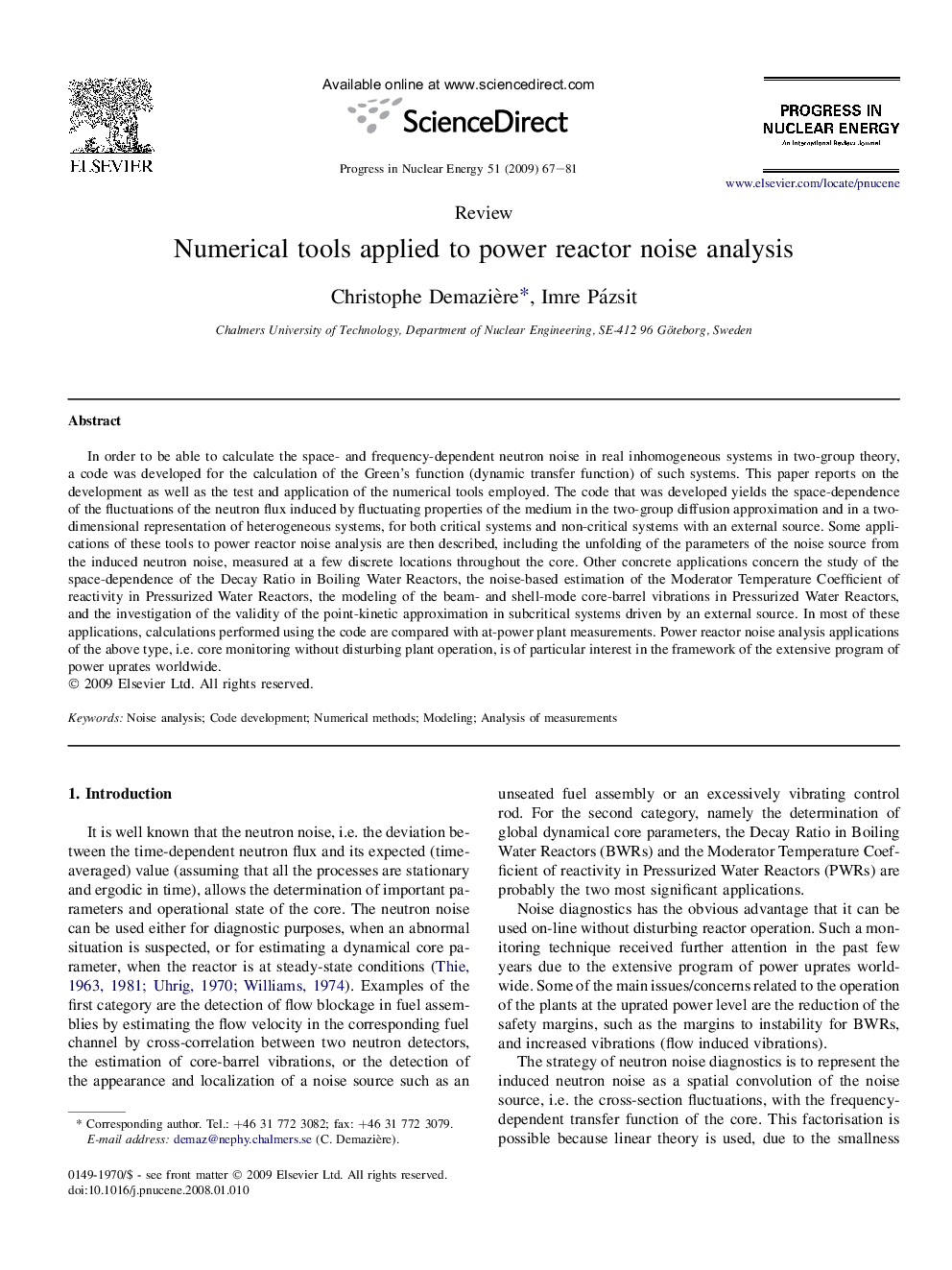| Article ID | Journal | Published Year | Pages | File Type |
|---|---|---|---|---|
| 1741452 | Progress in Nuclear Energy | 2009 | 15 Pages |
In order to be able to calculate the space- and frequency-dependent neutron noise in real inhomogeneous systems in two-group theory, a code was developed for the calculation of the Green's function (dynamic transfer function) of such systems. This paper reports on the development as well as the test and application of the numerical tools employed. The code that was developed yields the space-dependence of the fluctuations of the neutron flux induced by fluctuating properties of the medium in the two-group diffusion approximation and in a two-dimensional representation of heterogeneous systems, for both critical systems and non-critical systems with an external source. Some applications of these tools to power reactor noise analysis are then described, including the unfolding of the parameters of the noise source from the induced neutron noise, measured at a few discrete locations throughout the core. Other concrete applications concern the study of the space-dependence of the Decay Ratio in Boiling Water Reactors, the noise-based estimation of the Moderator Temperature Coefficient of reactivity in Pressurized Water Reactors, the modeling of the beam- and shell-mode core-barrel vibrations in Pressurized Water Reactors, and the investigation of the validity of the point-kinetic approximation in subcritical systems driven by an external source. In most of these applications, calculations performed using the code are compared with at-power plant measurements. Power reactor noise analysis applications of the above type, i.e. core monitoring without disturbing plant operation, is of particular interest in the framework of the extensive program of power uprates worldwide.
